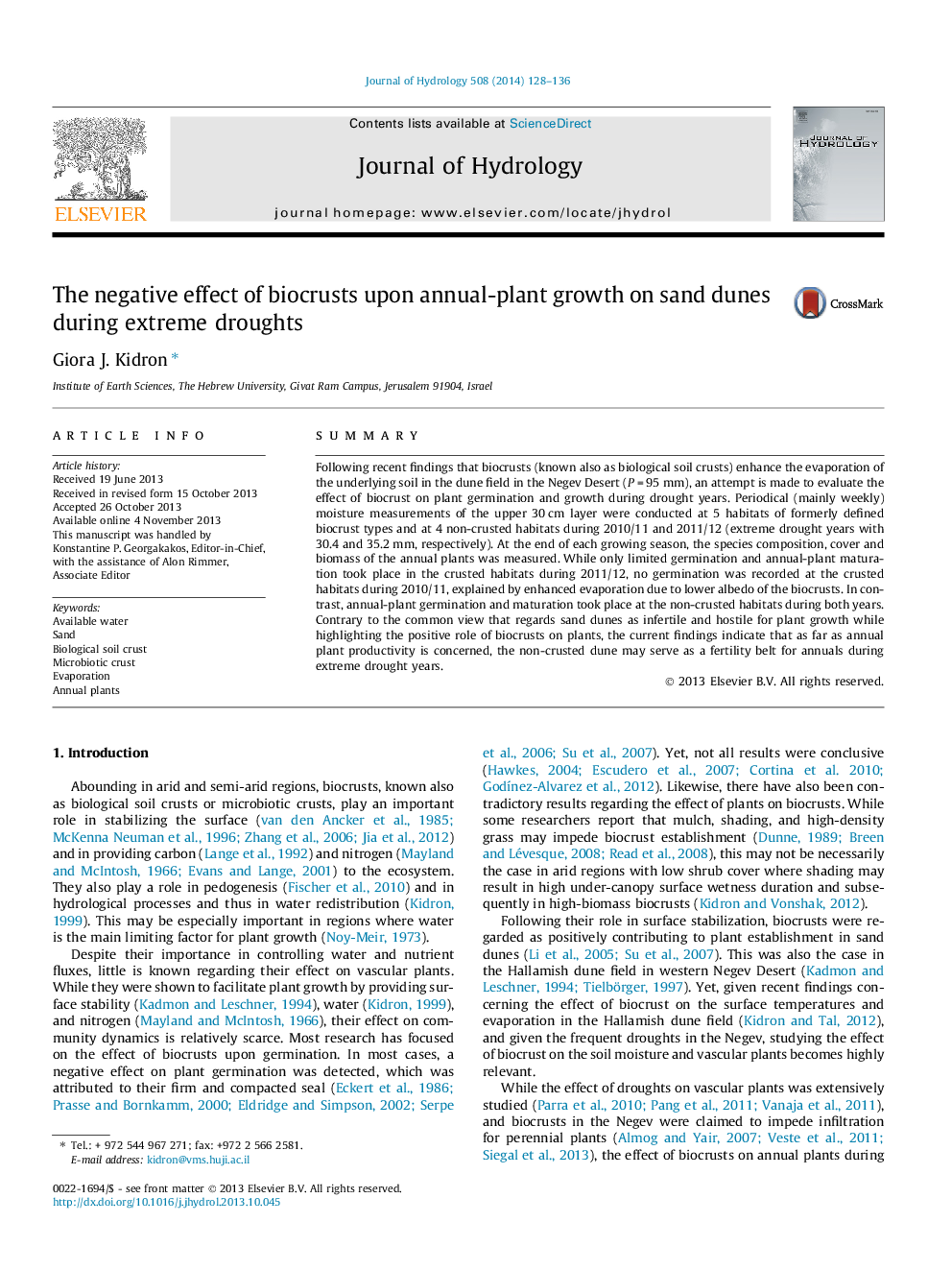| Article ID | Journal | Published Year | Pages | File Type |
|---|---|---|---|---|
| 4576042 | Journal of Hydrology | 2014 | 9 Pages |
•The moisture content of crusted and non-crusted habitats on sand was measured.•Higher available water characterized the non-crusted habitats during drought years.•Non-crusted habitats had higher species diversity, density and biomass.•Crusts exert a negative effect on annual plants during droughts.•Mobile sand serve as fertility belts for annual plants during drought years.
SummaryFollowing recent findings that biocrusts (known also as biological soil crusts) enhance the evaporation of the underlying soil in the dune field in the Negev Desert (P = 95 mm), an attempt is made to evaluate the effect of biocrust on plant germination and growth during drought years. Periodical (mainly weekly) moisture measurements of the upper 30 cm layer were conducted at 5 habitats of formerly defined biocrust types and at 4 non-crusted habitats during 2010/11 and 2011/12 (extreme drought years with 30.4 and 35.2 mm, respectively). At the end of each growing season, the species composition, cover and biomass of the annual plants was measured. While only limited germination and annual-plant maturation took place in the crusted habitats during 2011/12, no germination was recorded at the crusted habitats during 2010/11, explained by enhanced evaporation due to lower albedo of the biocrusts. In contrast, annual-plant germination and maturation took place at the non-crusted habitats during both years. Contrary to the common view that regards sand dunes as infertile and hostile for plant growth while highlighting the positive role of biocrusts on plants, the current findings indicate that as far as annual plant productivity is concerned, the non-crusted dune may serve as a fertility belt for annuals during extreme drought years.
